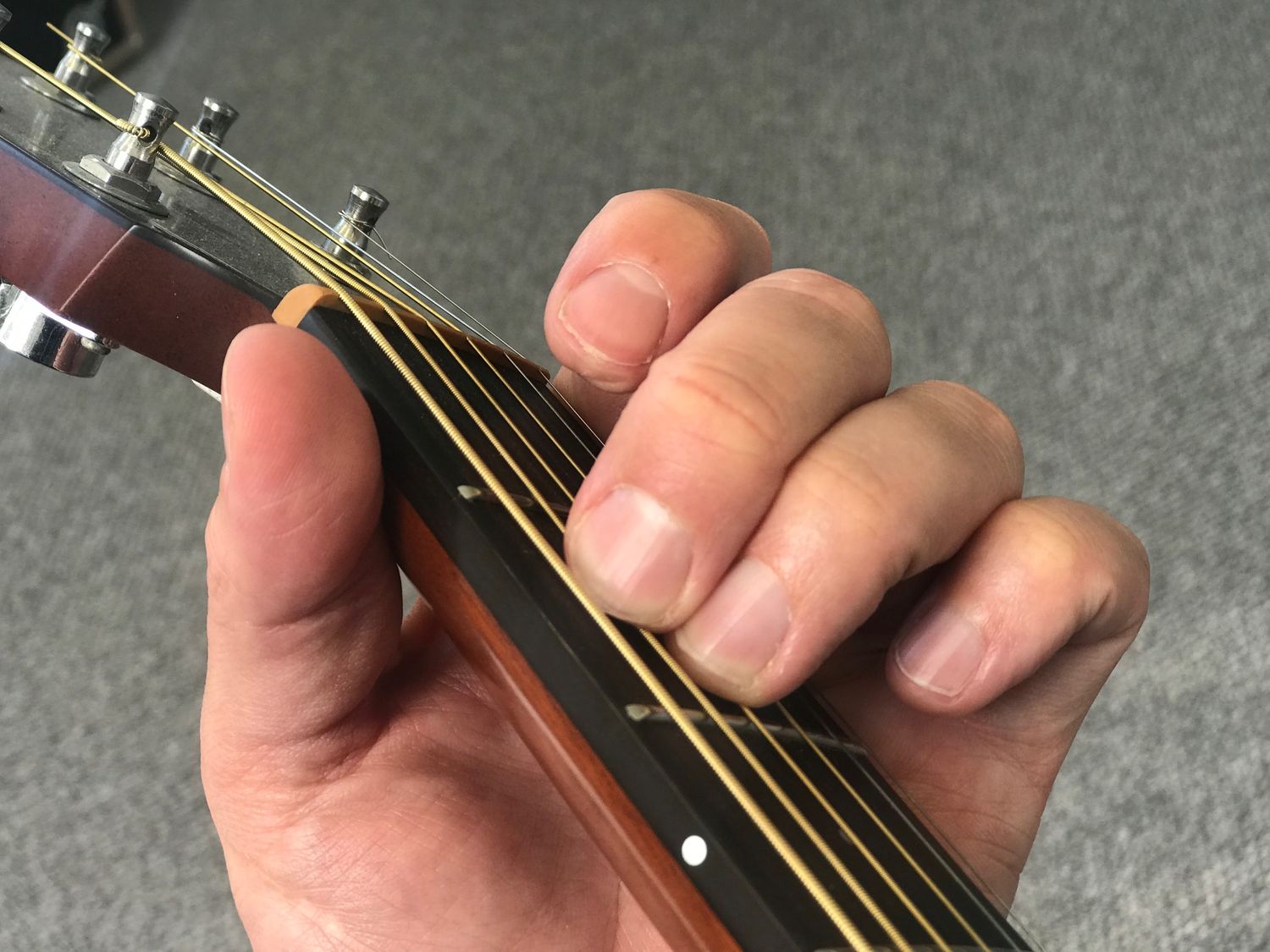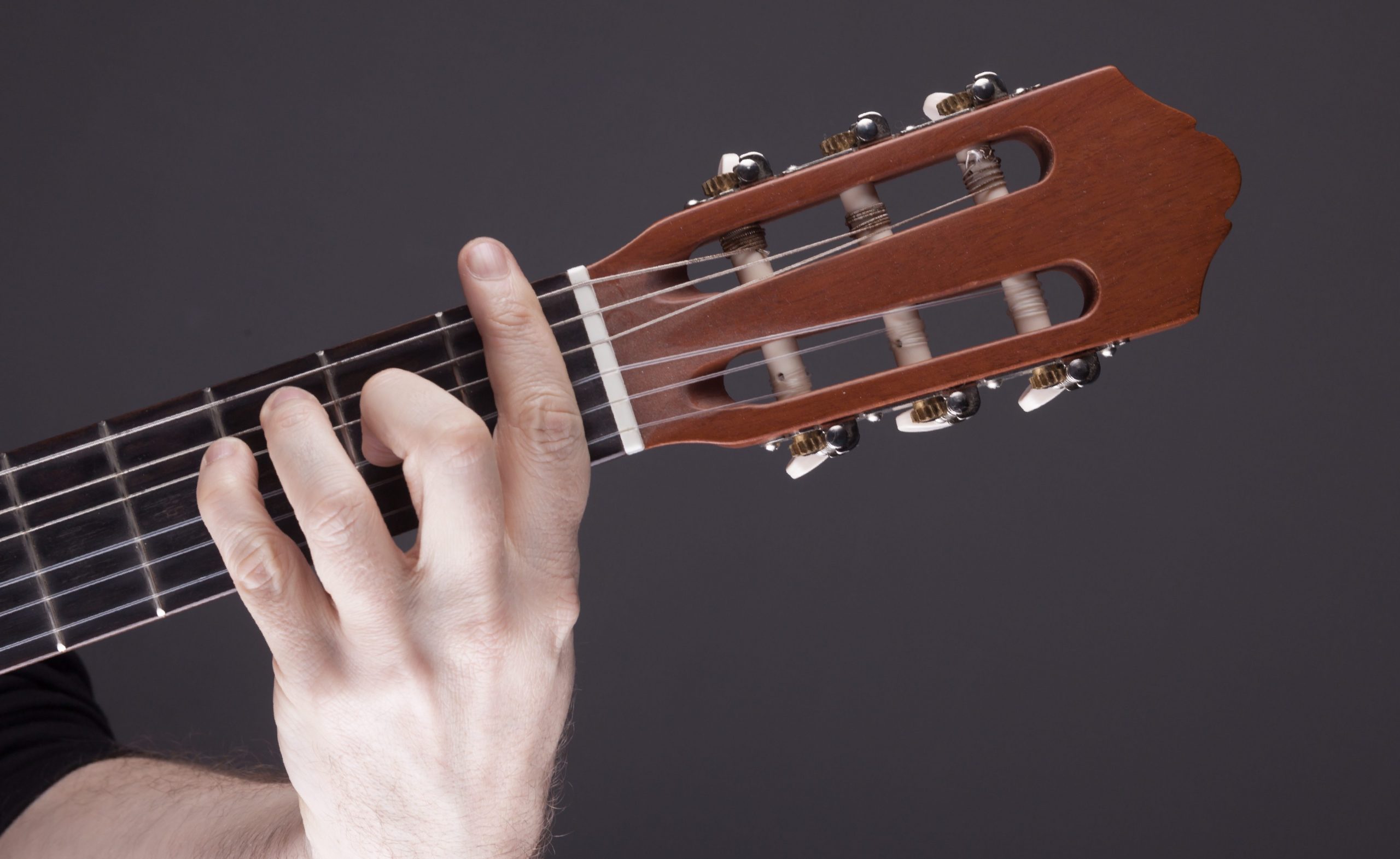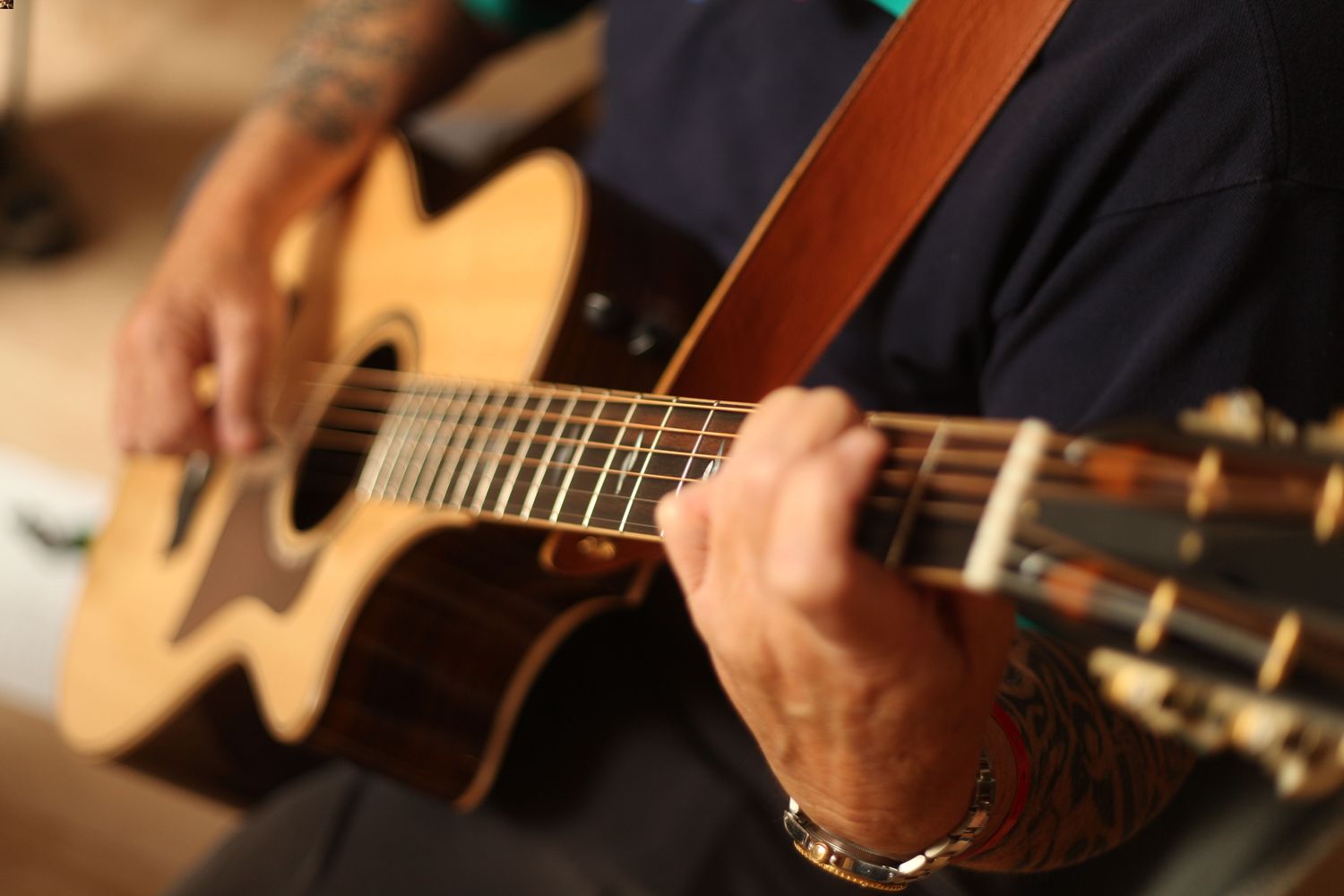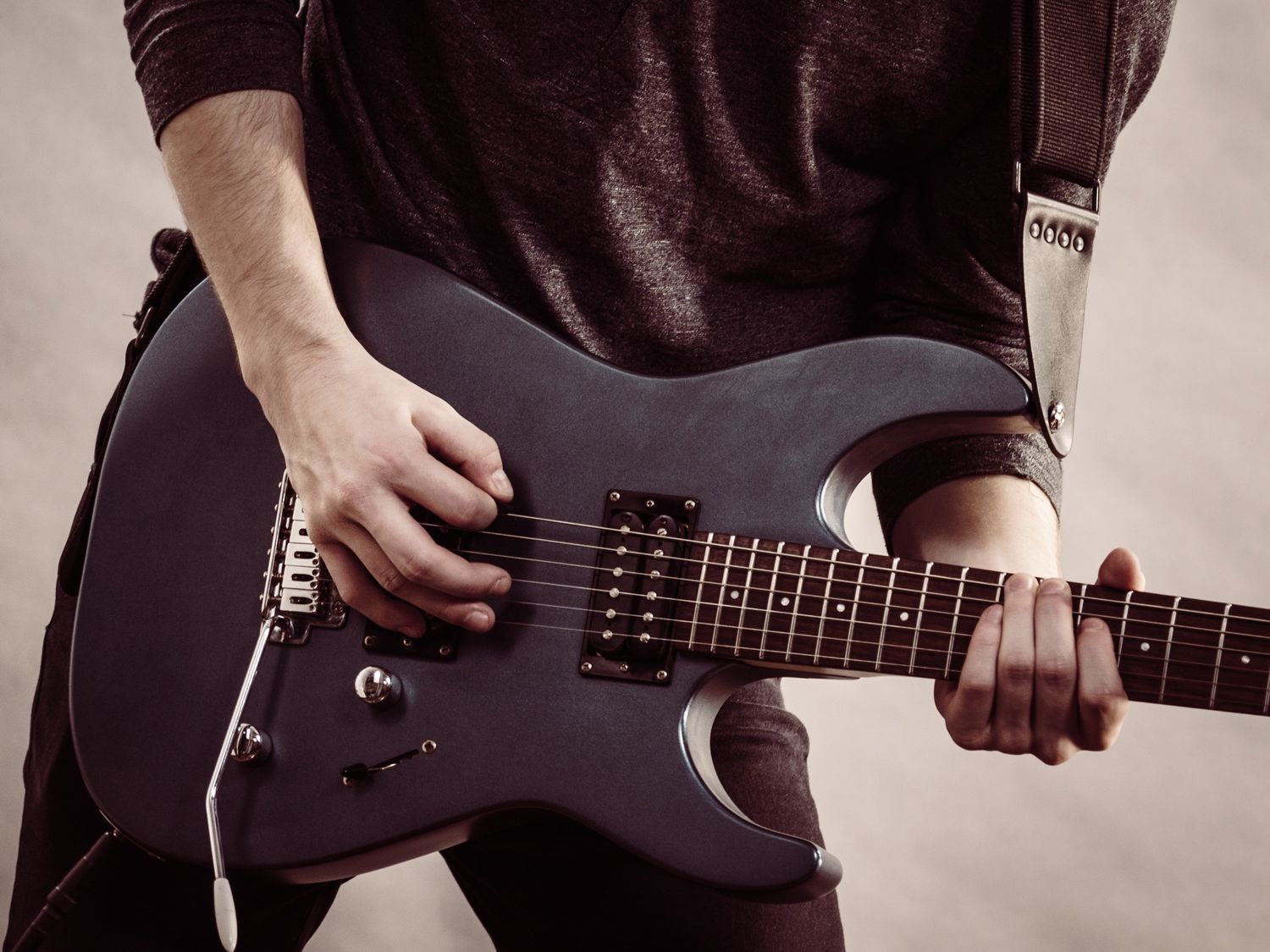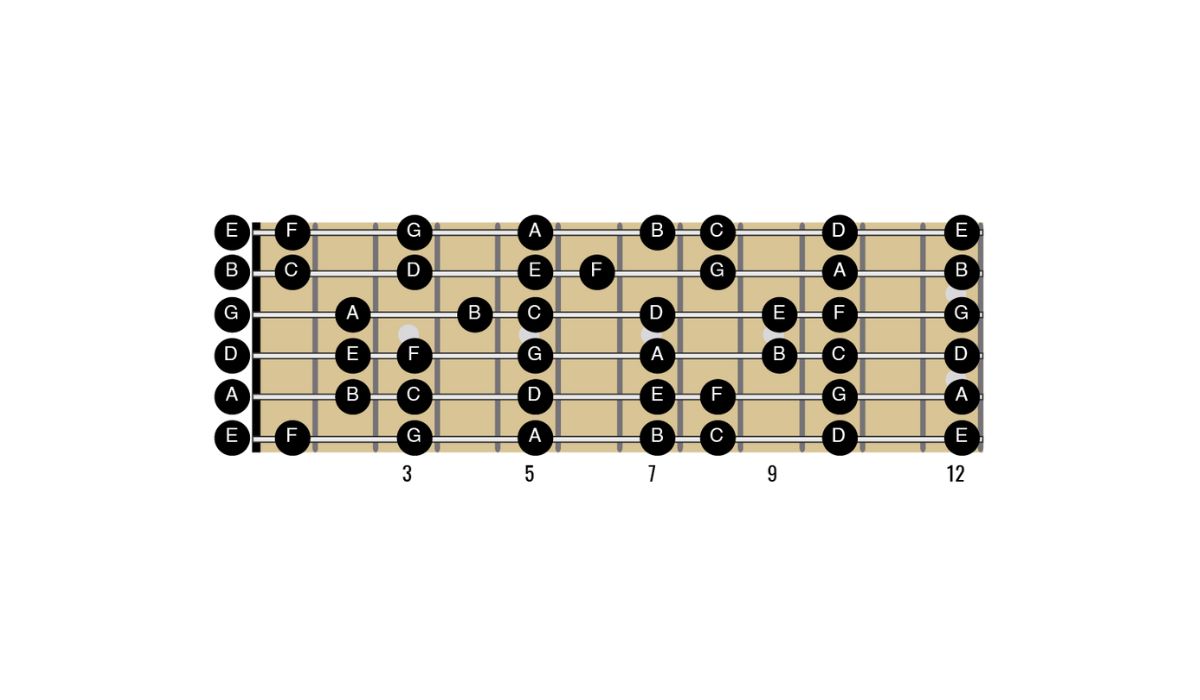Home>Instruments>Guitar>How To Play A Riff On Guitar
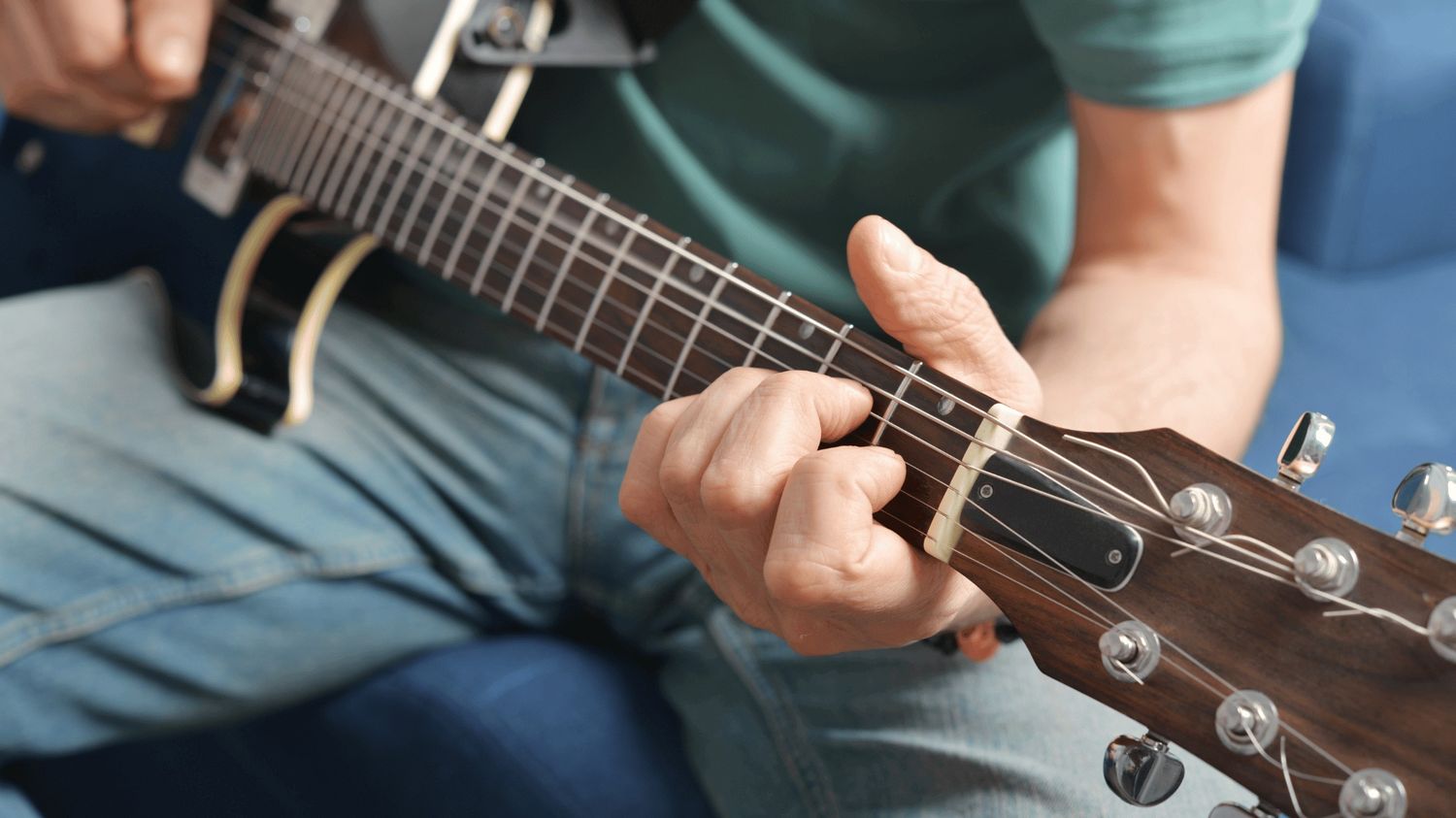

Guitar
How To Play A Riff On Guitar
Published: February 13, 2024
Learn how to play a catchy guitar riff with our step-by-step guide. Master the art of guitar playing and impress your friends today!
(Many of the links in this article redirect to a specific reviewed product. Your purchase of these products through affiliate links helps to generate commission for AudioLover.com, at no extra cost. Learn more)
Table of Contents
Introduction
So, you want to learn how to play a riff on the guitar? That's fantastic! Riffs are the catchy, repetitive musical phrases that form the backbone of countless songs across various genres, from rock and blues to metal and beyond. Mastering the art of playing riffs can elevate your guitar playing to a whole new level and add an irresistible groove to your music.
In this comprehensive guide, we'll delve into the world of guitar riffs, exploring everything from the fundamental techniques to the nuances of creating your own signature riffs. Whether you're a beginner picking up the guitar for the first time or an experienced player looking to expand your repertoire, this guide will provide valuable insights and practical tips to help you become a proficient riff master.
Throughout this journey, we'll cover essential topics such as understanding the anatomy of riffs, selecting the right guitar for riff playing, tuning your instrument for optimal performance, mastering basic playing techniques, and ultimately, playing your first riff. We'll also explore effective practice strategies to help you hone your skills and unlock your full potential as a riff guitarist.
By the end of this guide, you'll not only have the knowledge and tools to play impressive riffs but also the inspiration to infuse your own creativity into this timeless aspect of guitar playing. So, grab your guitar, get ready to rock, and let's embark on this exciting riff-playing adventure together!
Understanding Riffs
Before diving into the technical aspects of playing riffs, it’s essential to understand what they are and their significance in the world of music. A riff is a short, repeated musical phrase that forms the foundation of a song or a musical piece. It serves as a memorable and recognizable motif that often defines the character and mood of the music.
Riffs are prevalent in various genres, from the iconic opening riff of “Smoke on the Water” by Deep Purple to the bluesy swagger of “Sunshine of Your Love” by Cream. They can be simple and infectious or complex and intricate, showcasing the creativity and skill of the guitarist. Regardless of their complexity, riffs are designed to captivate the listener and create a sense of anticipation and excitement.
Understanding the anatomy of a riff is crucial for aspiring guitarists. Riffs typically consist of a combination of notes, often played in a specific sequence or pattern. These notes are often derived from scales, such as the pentatonic or blues scale, and are arranged to create a cohesive and melodically appealing phrase. Additionally, the rhythm and timing of the notes play a vital role in shaping the feel and groove of the riff.
Moreover, riffs are not limited to a single guitar; they can be played on multiple guitars to create a harmonized and layered effect, adding depth and richness to the music. In a band setting, the interplay between different instruments, each contributing a unique riff, can elevate the overall sonic experience and drive the song forward.
Ultimately, riffs serve as a powerful means of expression for guitarists, allowing them to inject their personality and style into the music. Whether you’re drawn to the raw energy of rock riffs, the soulful allure of blues riffs, or the technical prowess of metal riffs, understanding the essence of riffs is the first step toward mastering their artistry.
Choosing the Right Guitar
When it comes to playing riffs, selecting the right guitar is crucial for achieving the desired tone and playability. The choice of guitar can significantly influence the way riffs sound and feel, so it’s essential to consider several factors when making this decision.
First and foremost, consider the genre or style of music you intend to play. Different guitars are suited for specific genres, and their tonal characteristics can complement the nature of riffs associated with those genres. For instance, if you’re drawn to classic rock and blues riffs, a solid-body electric guitar, such as a Fender Stratocaster or Gibson Les Paul, may be an ideal choice due to their versatile tonal capabilities and iconic status in these genres. On the other hand, if you’re inclined towards heavy metal or hard rock riffs, a guitar with humbucking pickups and a more aggressive sound, like a Gibson SG or a Jackson Soloist, might be more suitable.
Furthermore, consider the playability and ergonomics of the guitar. Riffs often involve intricate finger movements and rapid chord changes, so having a guitar with a comfortable neck profile, suitable string gauge, and smooth fretboard can enhance your playing experience and facilitate the execution of riffs with precision and ease. Whether you opt for a traditional electric guitar, a versatile acoustic-electric, or a specialized guitar designed for a specific genre, ensuring that it feels comfortable in your hands is paramount.
Additionally, take into account the build quality and craftsmanship of the guitar. A well-constructed instrument with high-quality components can contribute to better tuning stability, sustain, and overall tonal richness, all of which are essential for bringing out the best in riffs. While budget considerations are important, investing in a guitar that offers reliable performance and durability can be a wise decision in the long run.
Ultimately, the right guitar for playing riffs is one that resonates with your musical preferences, inspires creativity, and complements your playing style. Whether you’re drawn to the timeless allure of vintage instruments or the modern innovations of contemporary guitars, finding the perfect match for your riff-playing aspirations can set the stage for an exhilarating musical journey.
Tuning Your Guitar
Before delving into the realm of riff playing, ensuring that your guitar is properly tuned is paramount. The tuning of your instrument directly impacts the sound and playability of riffs, making it essential to familiarize yourself with the standard tuning and the methods for achieving and maintaining optimal pitch accuracy.
Standard tuning for a six-string guitar, from the lowest-pitched string to the highest, is EADGBE. This standard tuning provides a balanced arrangement of notes across the fretboard, allowing for versatile chord voicings and melodic patterns commonly used in riff playing. Familiarizing yourself with the pitch of each string in standard tuning is a fundamental step in preparing your guitar for riff exploration.
Various methods can be employed to tune your guitar accurately. Traditional methods involve using a tuning fork, pitch pipes, or a piano to reference the pitch of each string. However, modern guitar tuners, whether clip-on, pedal-based, or smartphone apps, offer convenient and precise tuning solutions, making the process more accessible for beginners and experienced players alike.
Furthermore, exploring alternate tunings can expand the sonic palette available for crafting riffs. Alternate tunings, such as drop D tuning (DADGBE) or open G tuning (DGDGBD), can imbue riffs with a distinct character and unlock new creative possibilities. Experimenting with alternate tunings can lead to unique voicings and textures that may inspire fresh ideas for riff composition.
Once your guitar is tuned to the desired pitch, it’s essential to maintain its tuning stability, especially during energetic riff playing. Factors such as string gauge, proper string winding techniques, and the condition of the guitar’s nut and tuning machines can influence tuning stability. Regular maintenance, including restringing the guitar, lubricating the nut slots, and ensuring the proper functioning of tuning machines, can contribute to consistent tuning performance, allowing you to focus on expressing your riffs without the distraction of frequent retuning.
By understanding the importance of tuning and adopting effective tuning practices, you can set the stage for a rewarding riff-playing experience, where your guitar resonates with clarity and precision, bringing your musical ideas to life with authenticity and impact.
Learning Basic Techniques
Mastering the foundational techniques is essential for aspiring guitarists aiming to play captivating riffs. These techniques form the building blocks for executing riffs with precision, expressiveness, and musicality. Whether you’re a beginner taking your first steps in guitar playing or an experienced musician looking to refine your skills, honing these fundamental techniques is crucial for unlocking the potential of riff mastery.
One of the fundamental techniques central to riff playing is fretting notes cleanly and accurately. Developing proper finger placement and fretting technique is essential for producing clear and resonant notes, enabling you to articulate riffs with clarity and definition. Practicing scales, chord progressions, and simple melodies can help refine your fretting hand dexterity and finger strength, laying a solid foundation for riff execution.
Additionally, mastering the art of picking and strumming is crucial for imbuing riffs with rhythmic vitality and dynamic expression. Whether you prefer the precision of alternate picking or the fluidity of strumming, developing a controlled and consistent picking technique is vital for executing riffs with the desired articulation and groove. Focusing on exercises that emphasize picking accuracy, string muting, and rhythmic precision can enhance your overall playing proficiency.
Furthermore, understanding the principles of rhythm and timing is essential for crafting compelling riffs. Developing a strong sense of timing, including the ability to play in sync with a metronome or drum track, can elevate the rhythmic impact of your riffs and enhance their cohesion within a musical context. Exploring rhythmic patterns, syncopated accents, and varied subdivisions can add depth and dynamism to your riff playing, allowing you to create engaging musical phrases that resonate with listeners.
Moreover, familiarizing yourself with basic music theory concepts, such as scales, intervals, and chord structures, can enrich your understanding of how riffs are constructed and empower you to create your own original riffs. Understanding the relationship between notes and chords within a key can provide valuable insights into crafting melodically compelling and harmonically rich riffs that capture the essence of the music you envision.
By dedicating time and effort to mastering these fundamental techniques, you can lay a solid groundwork for your riff-playing journey, equipping yourself with the skills and fluency needed to bring riffs to life with confidence and creativity.
Playing Your First Riff
Congratulations on reaching this exciting milestone in your guitar journey! Playing your first riff is a memorable and gratifying experience that marks the beginning of your exploration into the captivating world of riff guitar playing. As you embark on this endeavor, it’s essential to approach the process with enthusiasm, patience, and a willingness to embrace the learning curve that comes with mastering a new riff.
When selecting your first riff to learn, consider starting with a well-known and relatively straightforward riff that aligns with your musical preferences. Iconic riffs from classic rock songs, such as “Smoke on the Water” by Deep Purple or “Satisfaction” by The Rolling Stones, often serve as popular choices for beginners due to their recognizability and approachable structure. Additionally, exploring riffs from genres that resonate with you, whether it’s blues, metal, or funk, can infuse your learning experience with a sense of personal connection and excitement.
Before diving into learning the riff, take the time to listen to the original recording to familiarize yourself with the melody, rhythm, and overall feel of the riff. Pay attention to the nuances of the performance, including the articulation of individual notes, the use of techniques such as bending or sliding, and the interaction between the riff and the accompanying instruments. This active listening approach can provide valuable insights that will inform your own rendition of the riff.
When learning the riff, break it down into manageable segments, focusing on mastering each phrase before progressing to the next. Start at a comfortable tempo and gradually increase the speed as you gain confidence and fluency. Pay close attention to your fretting hand’s finger placement and your picking hand’s coordination, aiming for clarity and precision in your execution.
As you work through the riff, don’t be discouraged by initial challenges or mistakes. Embrace the learning process as an opportunity for growth and development. Take breaks when needed, and revisit challenging sections with a fresh perspective. Over time, you’ll find that consistent practice and perseverance yield tangible progress, bringing you closer to embodying the riff with confidence and flair.
Once you’ve mastered your first riff, take pride in your accomplishment and celebrate the milestone. Playing a riff that once seemed daunting can instill a sense of achievement and motivation to tackle more complex riffs in the future. Moreover, the skills and insights gained from learning your first riff will serve as a solid foundation for your ongoing riff-playing endeavors, empowering you to explore a diverse repertoire of riffs with enthusiasm and determination.
Remember, playing your first riff is not just about replicating the notes; it’s about infusing the music with your personality and passion, making each rendition uniquely yours. Embrace the joy of riff guitar playing and let your first riff be the springboard for an enriching and fulfilling musical journey.
Practicing and Mastering Riffs
Practicing and mastering riffs is a dynamic and fulfilling process that demands dedication, persistence, and a strategic approach to skill development. Whether you’re aiming to polish existing riffs or create original ones, a well-rounded practice regimen can significantly enhance your proficiency as a riff guitarist and unlock your creative potential.
Consistent and focused practice is the cornerstone of mastering riffs. Establishing a regular practice routine, even if it’s for a short duration each day, can yield substantial improvements in your playing. Setting specific goals for each practice session, such as refining a particular riff’s timing, enhancing your picking accuracy, or memorizing new riffs, can provide a clear direction for your practice and facilitate measurable progress.
When practicing riffs, pay attention to the nuances that contribute to their authenticity and expressiveness. Experiment with variations in dynamics, articulation, and phrasing to imbue the riffs with a sense of musicality and emotion. Additionally, explore different tonal settings on your guitar and amplifier to discover how they can complement the character of each riff, adding depth and texture to your performances.
Furthermore, integrating riffs into musical contexts, such as jamming with backing tracks or playing alongside other musicians, can enhance your ability to apply riffs within a band setting and develop your improvisational skills. This collaborative approach to practicing riffs fosters adaptability and musical communication, allowing you to explore diverse stylistic interpretations and expand your creative horizons.
As you strive to master riffs, it’s essential to embrace a growth mindset and view challenges as opportunities for learning and refinement. Identify areas of your playing that require improvement and dedicate focused practice to address them. Whether it’s refining complex fingerings, increasing tempo capabilities, or exploring advanced techniques, approaching challenges with patience and perseverance can lead to breakthroughs in your riff-playing abilities.
Recording your practice sessions and performances can provide valuable insights into your progress and serve as a reference for self-assessment. Listening back to recordings allows you to identify areas for improvement, evaluate your tone and articulation, and track your development over time. Additionally, sharing your recordings with peers or instructors can elicit constructive feedback and fresh perspectives on your playing, fostering a supportive and collaborative learning environment.
Ultimately, the journey of practicing and mastering riffs is a deeply rewarding pursuit that offers continual growth and artistic fulfillment. By approaching your practice with intention, creativity, and a commitment to excellence, you can elevate your riff-playing skills and immerse yourself in the timeless allure of crafting compelling and memorable musical phrases.

